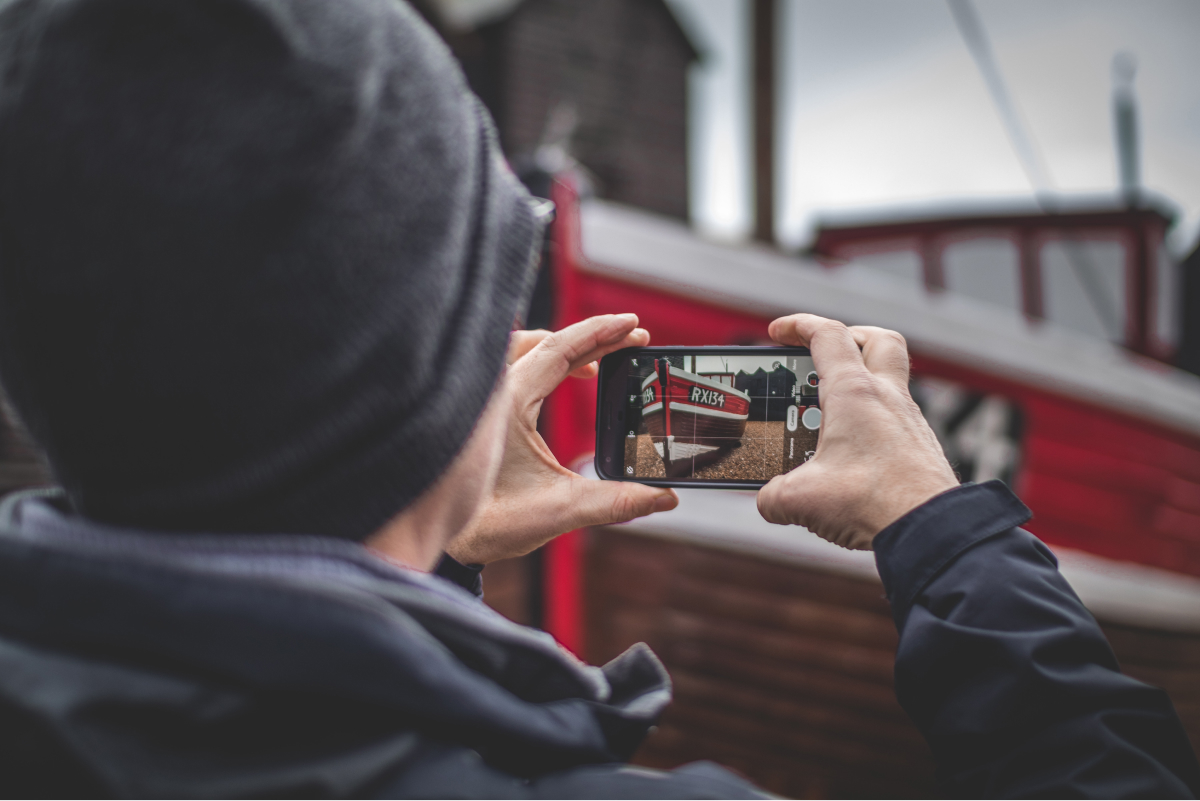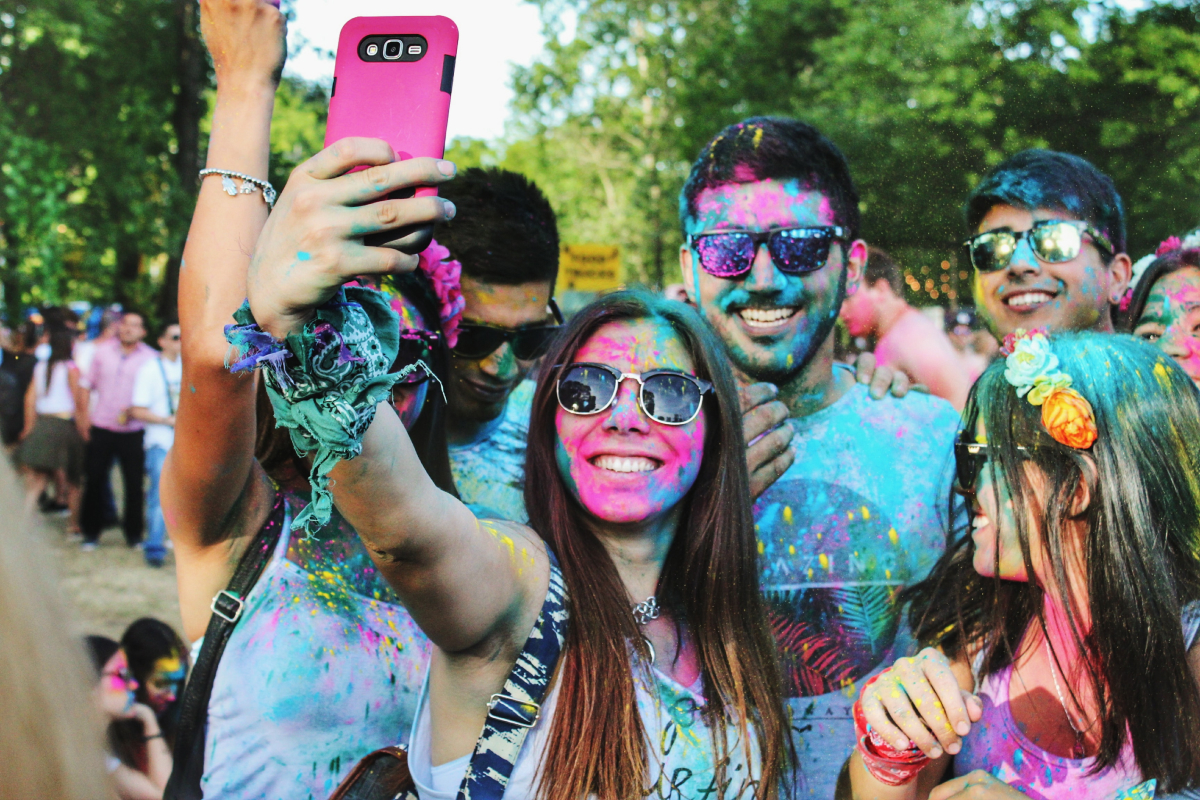Mobile app design inspiration can come from anywhere, from magazines, to movies to music playlists. But there are some apps that influence virtually everyone. Whether via breakthrough features, clean design or intuitive user flow, these apps forever changed the way we use our devices. Here’s what you can learn from four of the most influential apps of all time.
Pandora and the Music Genome Project
Today, we take smart music streaming sites for granted. Music streaming apps like Spotify offer huge libraries and customized playlists to keep you supplied with music regardless of your tastes or mood.
But at the time it was created, Pandora was an incredibly ambitious project. Even today, it has an uncanny knack for understanding your musical preferences and turning you on to new artists. Here’s how that happened — and why Pandora matters to designers.
The Creation of Pandora Radio
While Pandora helped pave the way for other big-name streaming services, it’s a bit of an outlier, as most other streaming services tend to let you pick what you’re listening to. Pandora, on the other hand, takes your suggestions as just that — suggestions.
It’s also important to note that Pandora has a very different music catalog from other services. While other services stream hits from a particular era, genre or scene, Pandora finds more obscure songs with sonic similarities to the music you know and love. Spotify or Apple Music is like having your own personal pop radio DJ. Pandora is more like the music nerd who goes on at midnight, spinning obscure treasures that make you think of music in a different way.
Pandora almost has an activist feel to it, doesn’t it? As if it really wants you to get away from the Top 40 and into some new music that you haven’t heard before.
That’s not accidental. Before Sirius XM paid an incredible $3.5 billion for the company, Pandora started not as an app idea, so much as an idea about music. Tim Westergren was working as a touring musician, gigging with different groups. Westergren was inspired by all the incredible musicians he worked with, who had a great sound but no way to find an audience — a group he described as “a sea of undiscovered talent.”
As his music career progressed, Tim Westergren got a job as a composer — a gig that made him think about connecting fans to audiences on an individual level. To do his job, Westergren needed to understand the director’s tastes and create new songs that fit those tastes. Would it be possible to encode those tastes into a system of musical traits you could use to find similar songs? The result was the Music Genome Project.
The Music Genome Project uses trained musicologists to analyze songs and mark them using a sort of genetic code that describes the attributes of each song. Tim Westergren described them as “the primary colors of melody, harmony, rhythm, form, instrumentation, lyrics and voice.” He recruited his friend, Jon Kraft, who was able to secure $1.5 million in funding to start Pandora.
What Mobile App Designers Can Learn From Pandora
Share your big idea with your audience: Although Pandora’s exact formula for categorizing and finding related songs is a secret, they give you a lot of information about the process. When you create a station based on a song or album, Pandora uses the traits of that music to find related songs.
When new songs play, you can click on them to learn about some of the main attributes Pandora is using. This gives users a chance to peek under the hood and get a tantalizing glimpse at how the algorithm works. It also provides biographical information about artists, making it easy to learn more about the music.
Fully harness user feedback: In addition to buttons to control playback, Pandora’s control bar has “thumbs up” and “thumbs down” buttons on each song. These buttons allow the user to tune the station to fit better with what they typically enjoy, skipping and not repeating songs that get a “thumbs down,” while finding more songs similar to tunes with a “thumbs up.”
The interface is simple, but it’s very valuable for both the user and Pandora. The user gets to skip songs they don’t like (although only paid members get unlimited skips), and tune their station to get just the sound they’re looking for. For Pandora, it’s a free source of additional data, which they can use to provide better service.
By enabling, but not requiring them to participate, Pandora gives users a sense of ownership over their stations, and the pleasure of honing their perfect playlist. Not every creative app idea has a use case for this kind of direct user participation, but every designer should look for opportunities to better harness user feedback.
Instagram shows just how successful a good app idea can be — provided it’s in the right place at the right time. Instagram wasn’t the first photo editing app or the most feature-rich one, but its simple, yet elegant functionality propelled it past its competitors.
Not All Creative App Ideas Are Destined for Success
The Instagram story actually started with a completely different app called Burbn, a gamified check-in app created by Kevin Systrom. At the time, Systrom was a marketer at another now-defunct app company called Nextstop, but was trying to learn to code by building an app. Burbn made meeting with friends a game, where users could check in, share photos and earn points.
Systrom built a prototype, pitched it to some VC he’d met at a business event, and quickly raised half a million in funding, enabling him to bring on programmer Mike Krieger.
Burbn ultimately failed to gain wide adoption, however its failure was the key to Instagram’s success. Systrom found that users didn’t care about the app’s check-in features and found the app too complex and confusing to use it as he envisioned. However, there was one feature they did like: photo-sharing. That inspired them to scrap Burbn and build Instagram — an app solely focused on sharing and editing photos.
Instagram Builds Fabulous Success on Burbn’s Failure
When Instagram was released in 2010, it was an immediate hit, becoming the top iOS free photo app within hours. Its key was simplicity. Using the lessons they learned from Burbn, Instagram’s founders boiled down the features to the essentials: posting photos, sharing, commenting, and its iconic filters. Just two years later, it was sold to Facebook for $1 billion.
What Mobile App Designers Can Learn From Instagram
Pay attention to how your users use your app: Systrom badly miscalculated what his users wanted with Burbn, but that miscalculation led him straight to Instagram. If he hadn’t dived into the analytics and seen how much his users were enjoying posting photos, it’s quite likely someone else would have had the breakaway iOS photo app.
Prototype and pitch as soon as you can: Systrom was still learning to code when he pitched his prototype of Burbn, but he didn’t wait to perfect his skills — he saw the opportunity to secure funding and he took it. If you’ve got a good app idea, the sooner you start pitching, the better. The sooner you build a prototype and start showing it to potential investors, the sooner you’ll get startup capital.
Network, network, network: Knowing the right people played a crucial role in Systrom’s success, as it does in so many Silicon Valley success stories. And the only way to know the right people is to network.
Snapchat and the Lure of Ephemerality
Snapchat is a rare app in that its appeal is derived not from its functionality, but its limits. Almost a decade after Reggie Brown first came up with the idea, most users know that no app is truly ephemeral — any image a user sees on their screen can be captured if the user really wants to. Yet the app remains incredibly popular. In fact, it’s the social networking app of choice for Gen Z. But what makes Snapchat an influential mobile app is not just for the creative idea behind it, but what it tells us about users.
The Origin of Snapchat: Snapchat doesn’t have the most glamorous origin story — it started with a stoned college guy named Reggie Brown brainstorming ways he could exchange more naked pictures with women, and stumbling upon the idea of time-limited pictures. He founded a company which his co-founders later would cut him out of, claiming it was their idea in the first place, leading to a lawsuit and an eventual $157.5 million cash settlement to keep him quiet. But none of that detracts from how cool an app idea Snapchat was.
The Internet was giving people more freedom to communicate and share experiences, but that freedom came at a cost. With the ability to exchange any image or text with a few clicks, it was hard to balance the desire to share, against the possible long-term consequences of putting yourself out there online — particularly for young people. With ephemeral images, Snapchat gave users the ability to share more openly with friends.
What Mobile App Designers Can Learn From Snapchat
Limits can be features: Snapchat was incredibly limited when it came out. It was only available on iOS, lacked support for videos and even its iconic filters weren’t introduced until 2015. But its extremely limited functionality was part of its appeal. Those limits differentiated it from the carefully curated experience of Facebook or Instagram, creating something that felt raw and distinctive to users. Even its single-platform support made it feel exclusive.
An app doesn’t necessarily have to do something no one has done before, or even offer more or better features to succeed. With simple app ideas, sometimes it’s what’s missing that counts.
Social apps are about creating experiences: At their core, social apps aren’t primarily a way to share information, or even a system to communicate per se — rather, they’re about connecting users together through shared virtual experience. By enabling people to share exclusive posts that can only be seen once by recipients, Snapchat created a unique, engaging social experience that’s different from posting an image on Instagram or Facebook — an experience that continues to appeal to users to this day.
How Pokémon GO Made the World a Playground
Elegant, minimal mobile app design will always have its place, but for pure scope and spectacle, nothing beats Niantic’s Pokémon GO. First released in 2016, the app took the world by storm, with more than 500 million downloads by the end of the year. Years later, the freemium app is still a huge moneymaker. As of May 2018, Pokémon GO had 174 million active users, making $104 million in just one month.
While Pokémon GO was not the first augmented reality app, no other app in the genre has had quite the same impact or influence on our culture. Almost overnight, Pokémon GO changed the way millions of people understand and relate to the world around them and showed augmented reality designers that their grandest dreams of integrating tech and the real world really were possible.
Users can play virtually anywhere, using their video cameras to watch their virtual pets battle other players, imposed seamlessly on the landscape. In fact, the game rewards players for exploring, incentivizing exercise in the process. While the game has had its share of problems, from glitches to Pokémon gyms in hazardous locations (including the Korean demilitarized zone) no one can deny the sheer scope of what they pulled off.

What Mobile App Designers Can Learn From Pokémon GO
Big ideas take time to become reality: Like most people in the tech world, we love stories of successful designers and developers whose cool app ideas lead to overnight success, but they’re more the exception than the rule. Most technology successes are years in the making, or in the case of Pokémon GO creator John Hanke, decades.
Hanke’s software career started back in 1996, when he launched one of the first commercial MMORPGs, a game called Meridian 59. Later, he co-founded Keyhole, a company which enabled users to look anywhere on Earth with satellite photos. The technology so impressed Google, that they bought it and brought Hanke on, where he would oversee Google Earth. Always restless and eager to move on to new projects, he then created a gaming division within the company — which was eventually spun off into Niantic.
In other words, Hanke himself played a major role in designing the underlying technology that makes Pokémon GO work, from the basic elements of graphical MMORPGs to the complex tools that let the app turn the world into a virtual battle.
And that’s not even the whole story — before the release of Pokémon GO, Niantic created Ingress (later revamped as Ingress Prime), a game which pioneered the global combat elements that have made GO such a success. You could look at the first 17 years of his career as one continuous road to Pokémon GO.
You don’t have to be doing something new every few months to design good apps. More often than not, the biggest, most world-changing ideas are many years in the making.
An imperfect app isn’t a mistake: If you’re doing something genuinely new, you won’t get it perfect the first time — but you won’t need to.
If you’re lucky enough to have a runaway success like Pokémon GO, there will be bugs (and users willing to list them in exacting detail), but that’s okay. Keep getting your apps out there, connecting with your users and making something better every iteration.
Looking for more inspiration for your big idea? Learn about some app interface ideas that changed the world, and 7 apps making a difference now!
What did we leave off this list? What do you think are the most influential apps of all time? Let us know by tweeting us @Protoio!









